Abstract
Previous studies in experimentally demyelinated mammalian nerves have demonstrated that a reversible conduction block occurs with small increases of temperature within the animal's normal body temperature range. This phenomenon is believed to be the mechanism for clinical temperature effects in multiple sclerosis. This study examines some quantitative thermal relationships in demyelinated nerves of guinea pigs with experimental allergic neuritis. The observed results in normal and experimental animals are in good agreement with previous theoretical calculations based on the effects of temperature on the voltage and time-dependent behavior of the ionic permeabilities of the nodes of Ranvier. Guinea pigs with increasing motor dysfunction generally exhibited corresponding increases in the overall latency of the conducted action potential, as well as decreases in amplitude. In addition, the lower the initial velocity increment per degree of temperature elevation, the lower was the temperature at which conduction block began to occur. Except for a few cases in which the recorded action potential was bimodal, with response at both normal and prolonged latency, the results tended to indicate a remarkedly uniform involvement of the sciatic nerve within the region of temperature control.
Full text
PDF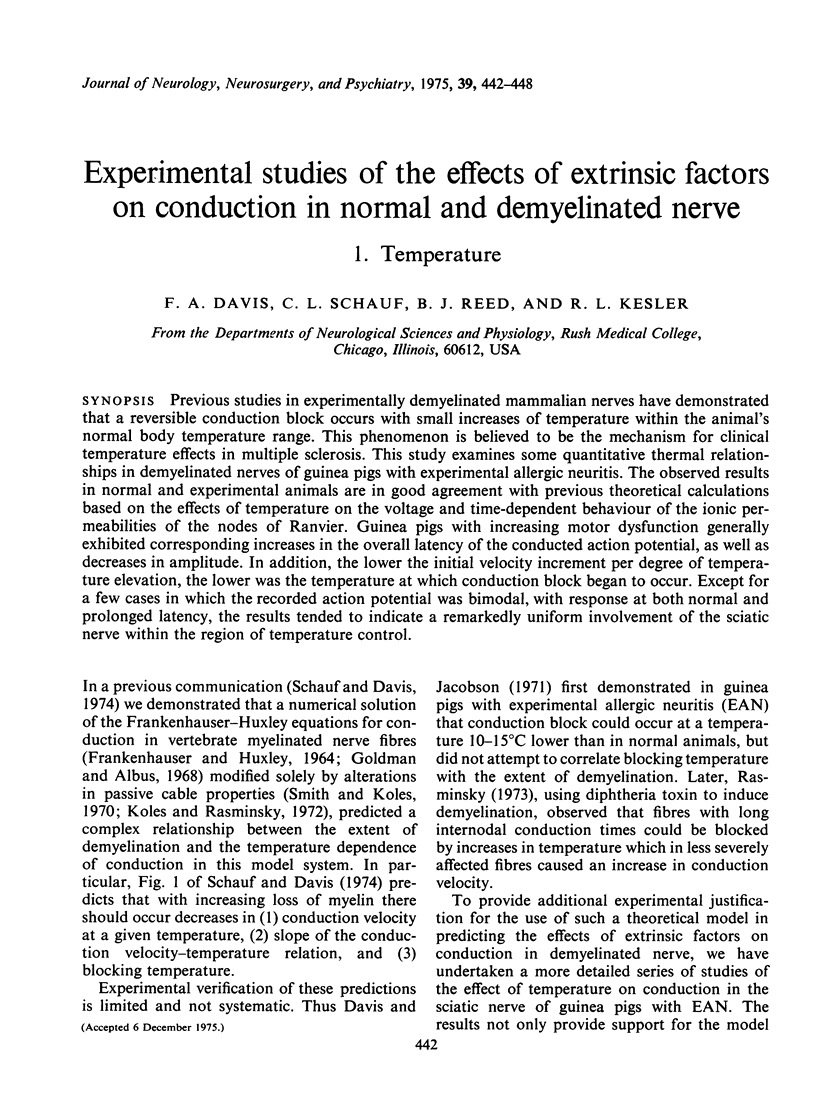
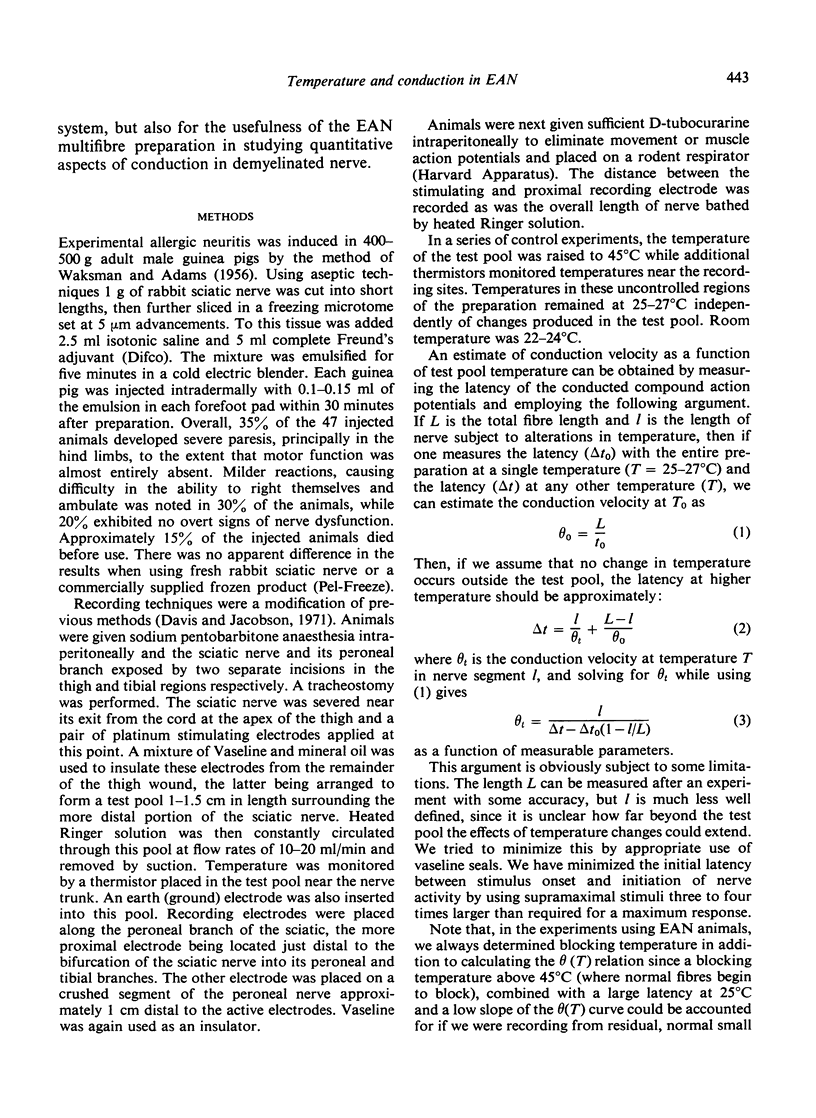
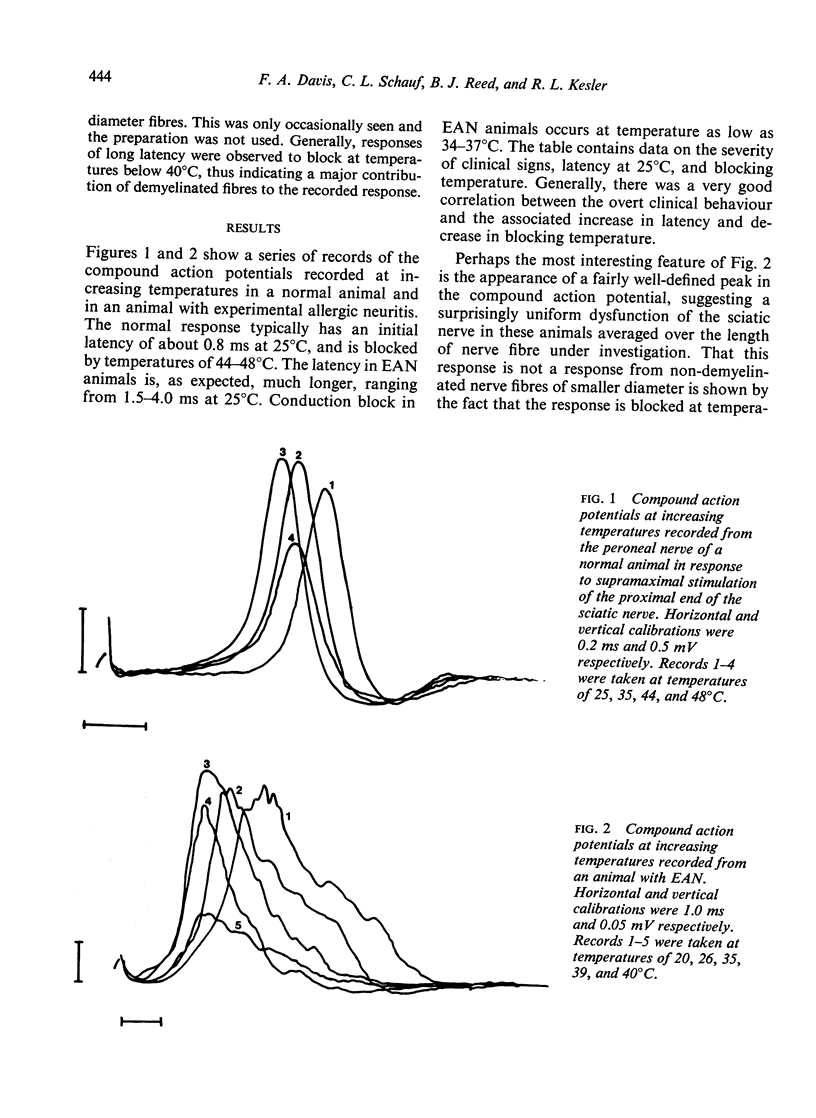
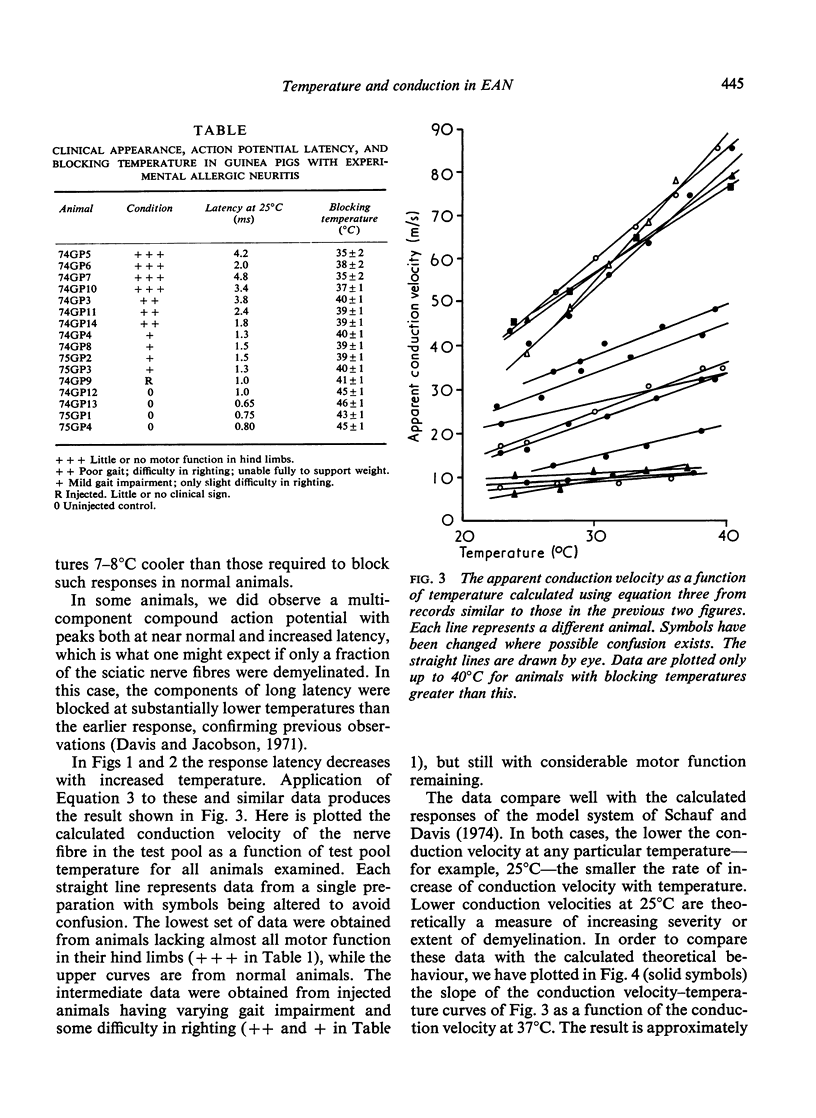
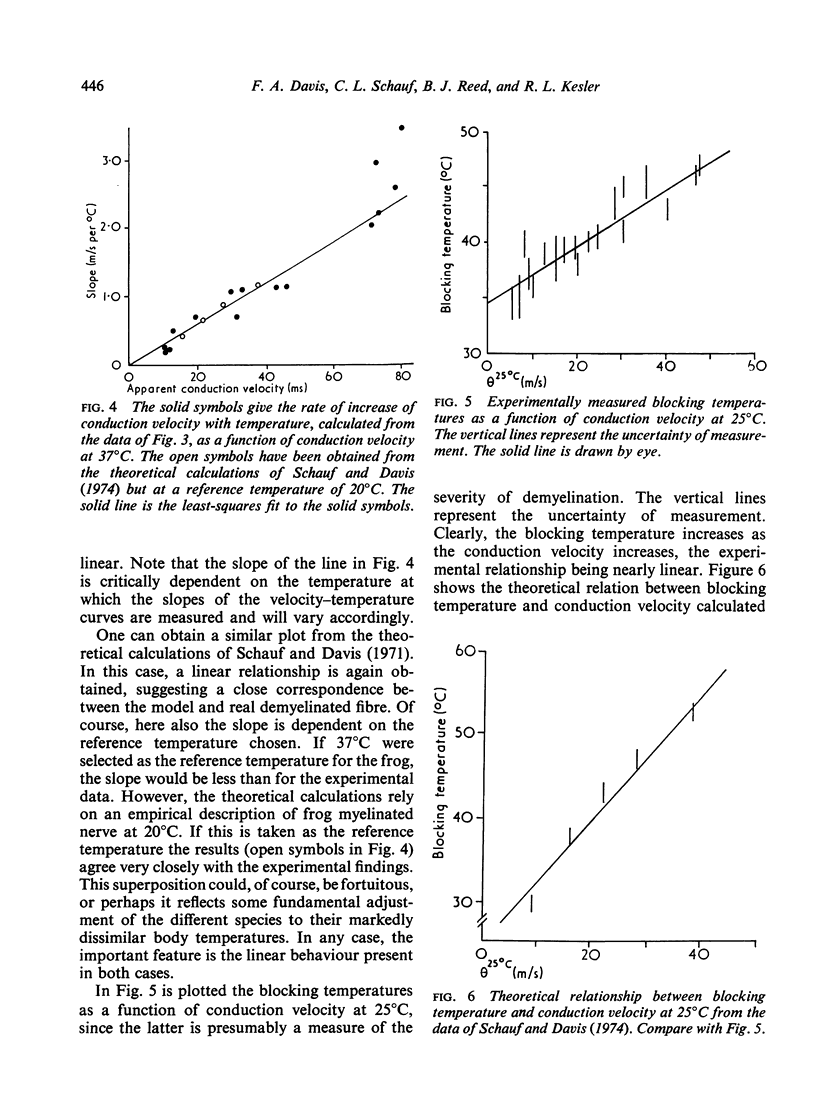
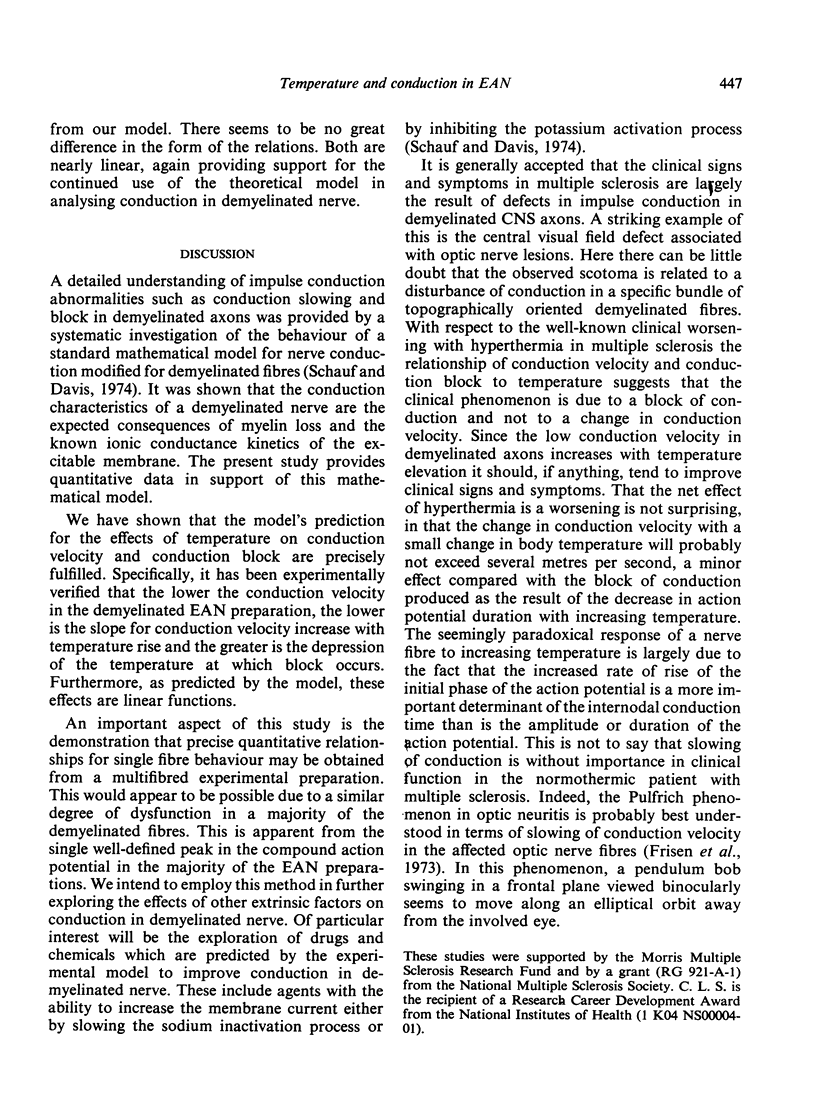
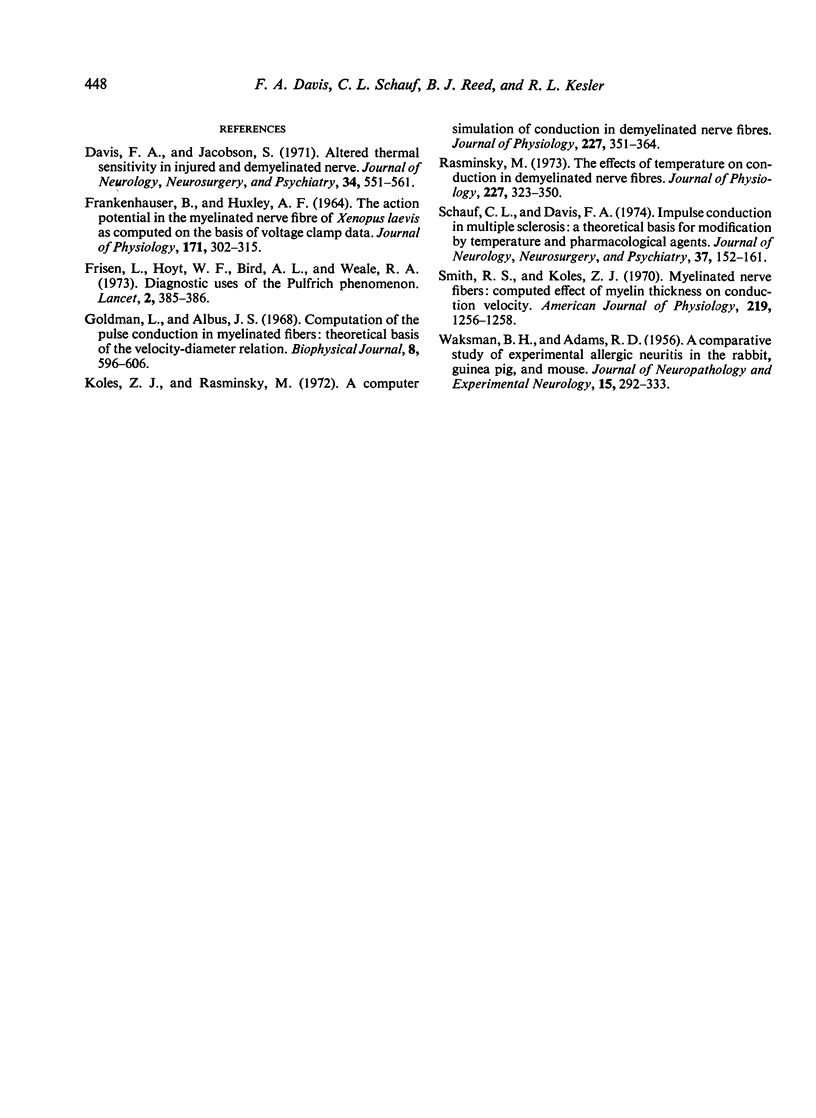
Selected References
These references are in PubMed. This may not be the complete list of references from this article.
- Davis F. A., Jacobson S. Altered thermal sensitivity in injured and demyelinated nerve. A possible model of temperature effects in multiple sclerosis. J Neurol Neurosurg Psychiatry. 1971 Oct;34(5):551–561. doi: 10.1136/jnnp.34.5.551. [DOI] [PMC free article] [PubMed] [Google Scholar]
- FRANKENHAEUSER B., HUXLEY A. F. THE ACTION POTENTIAL IN THE MYELINATED NERVE FIBER OF XENOPUS LAEVIS AS COMPUTED ON THE BASIS OF VOLTAGE CLAMP DATA. J Physiol. 1964 Jun;171:302–315. doi: 10.1113/jphysiol.1964.sp007378. [DOI] [PMC free article] [PubMed] [Google Scholar]
- Frisen L., Hoyt W. F., Bird A. C., Weale R. A. Diagnostic uses of the Pulfrich phenomenon. Lancet. 1973 Aug 18;2(7825):385–386. doi: 10.1016/s0140-6736(73)93238-8. [DOI] [PubMed] [Google Scholar]
- Goldman L., Albus J. S. Computation of impulse conduction in myelinated fibers; theoretical basis of the velocity-diameter relation. Biophys J. 1968 May;8(5):596–607. doi: 10.1016/S0006-3495(68)86510-5. [DOI] [PMC free article] [PubMed] [Google Scholar]
- Koles Z. J., Rasminsky M. A computer simulation of conduction in demyelinated nerve fibres. J Physiol. 1972 Dec;227(2):351–364. doi: 10.1113/jphysiol.1972.sp010036. [DOI] [PMC free article] [PubMed] [Google Scholar]
- Rasminsky M., Sears T. A. Internodal conduction in undissected demyelinated nerve fibres. J Physiol. 1972 Dec;227(2):323–350. doi: 10.1113/jphysiol.1972.sp010035. [DOI] [PMC free article] [PubMed] [Google Scholar]
- Schauf C. L., Davis F. A. Impulse conduction in multiple sclerosis: a theoretical basis for modification by temperature and pharmacological agents. J Neurol Neurosurg Psychiatry. 1974 Feb;37(2):152–161. doi: 10.1136/jnnp.37.2.152. [DOI] [PMC free article] [PubMed] [Google Scholar]
- Smith R. S., Koles Z. J. Myelinated nerve fibers: computed effect of myelin thickness on conduction velocity. Am J Physiol. 1970 Nov;219(5):1256–1258. doi: 10.1152/ajplegacy.1970.219.5.1256. [DOI] [PubMed] [Google Scholar]


